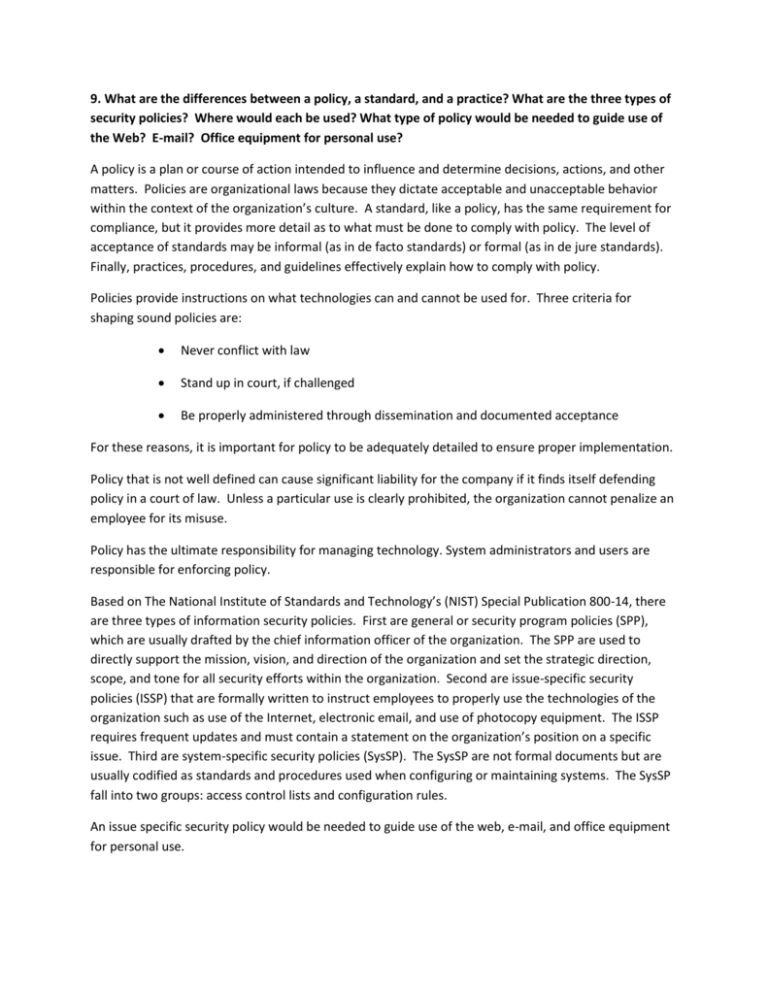Answer
advertisement

9. What are the differences between a policy, a standard, and a practice? What are the three types of security policies? Where would each be used? What type of policy would be needed to guide use of the Web? E-mail? Office equipment for personal use? A policy is a plan or course of action intended to influence and determine decisions, actions, and other matters. Policies are organizational laws because they dictate acceptable and unacceptable behavior within the context of the organization’s culture. A standard, like a policy, has the same requirement for compliance, but it provides more detail as to what must be done to comply with policy. The level of acceptance of standards may be informal (as in de facto standards) or formal (as in de jure standards). Finally, practices, procedures, and guidelines effectively explain how to comply with policy. Policies provide instructions on what technologies can and cannot be used for. Three criteria for shaping sound policies are: Never conflict with law Stand up in court, if challenged Be properly administered through dissemination and documented acceptance For these reasons, it is important for policy to be adequately detailed to ensure proper implementation. Policy that is not well defined can cause significant liability for the company if it finds itself defending policy in a court of law. Unless a particular use is clearly prohibited, the organization cannot penalize an employee for its misuse. Policy has the ultimate responsibility for managing technology. System administrators and users are responsible for enforcing policy. Based on The National Institute of Standards and Technology’s (NIST) Special Publication 800-14, there are three types of information security policies. First are general or security program policies (SPP), which are usually drafted by the chief information officer of the organization. The SPP are used to directly support the mission, vision, and direction of the organization and set the strategic direction, scope, and tone for all security efforts within the organization. Second are issue-specific security policies (ISSP) that are formally written to instruct employees to properly use the technologies of the organization such as use of the Internet, electronic email, and use of photocopy equipment. The ISSP requires frequent updates and must contain a statement on the organization’s position on a specific issue. Third are system-specific security policies (SysSP). The SysSP are not formal documents but are usually codified as standards and procedures used when configuring or maintaining systems. The SysSP fall into two groups: access control lists and configuration rules. An issue specific security policy would be needed to guide use of the web, e-mail, and office equipment for personal use. 11. What is contingency planning? How is it different from routine management planning? What are components of contingency planning? Contingency planning encompasses all planning conducted by the organization to prepare for, react to, and recover from events that threaten the security of information and information assets in the organization, and the subsequent restoration to normal modes of business operations. Each part of contingency planning is different in scope, applicability, and design compared to routine management planning. Contingency planning is composed of three plans: Incident Response Plan, Disaster Recovery Plan, and Business Continuity Plan. Contingency planning is all the planning conducted by the organization to prepare for, react to, and recover from events that threaten the security of information and information assets in the organization.






